Hodges Square Park
Community Design-Build / Connecticut USA / Connecticut College
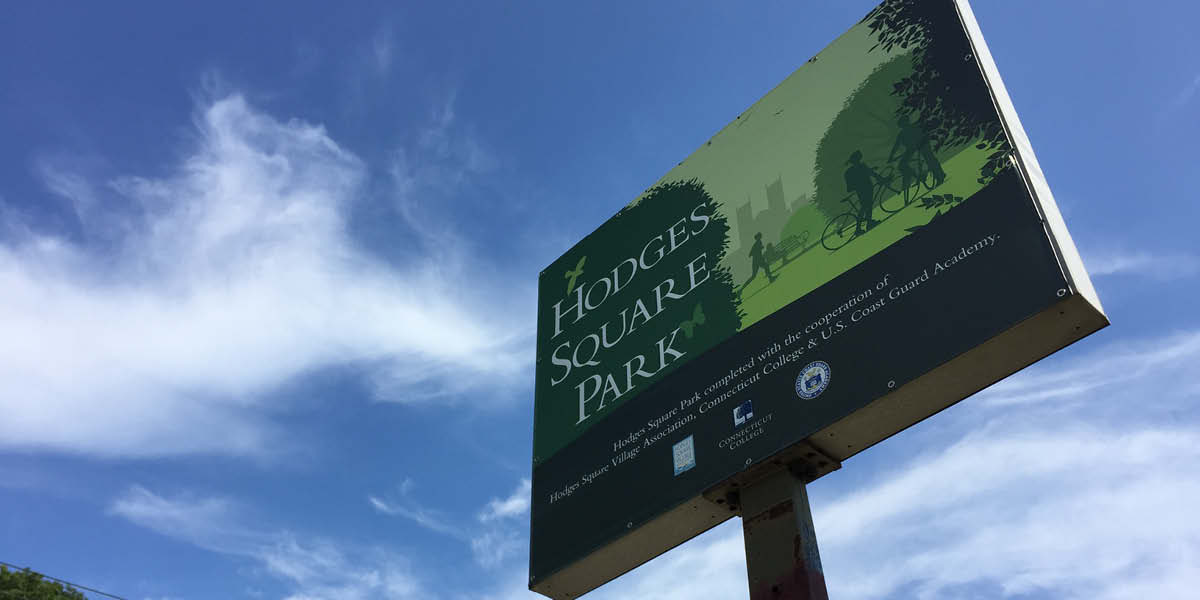
A former gas station sign is repurposed to announce the new park.
ARCHITECTURE STUDIES/PSYCHOLOGY 327: EVIDENCE BASED DESIGN
Stephen Fan, Adjunct Assistant Professor of Architecture with Ann Devlin, May Buckley Sadowski '19 Professor of Psychology
I INVESTIGATE
the community’s preferences for the design and use of a park on privately-owned land
II DESIGN
a parklet that reflects these public preferences
III BUILD
these structures in the parklet.
The plot in question, generously donated for public park use by Mahmut Tandogan, is in what is known as Hodges Square in the northeast section of New London, Connecticut near the Connecticut College campus. The project grew out of a series of ongoing efforts to revitalize the neighborhood. Professors Devlin and Fan team-taught this course with student enrollment reflecting both disciplines. To realize this parklet has involved a variety of interdisciplinary initiatives, ranging from developing a survey to obtain feedback about design issues and potential uses for the parklet, to ammending the zoning regulations to cover the use of private land for a public park, to soliciting construction materials from businesses in the surrounding community.
The course united students with different skill sets (research methods, in the case of psychology students; visualization and design, in the case of architectural studies students) in a collaborative effort. With current interest in evidence-based and human-centered design, increasingly architectural studies students need to understand how to frame questions for clients and users and to systematically collect and analyze responses. The ways in which questions are framed and response options are worded can inadvertently influence the answers people give. For psychology students, understanding how visual display can be used is a valuable skill; the degree to which visualizations clearly and systematically communicate their content is another way in which responses are affected.
The effort also involves a community group, the Hodges Square Village Association (HSVA) that has provided space for community meetings to discuss the project. Students attended HSVA meetings to explain their approach to the research and design effort, and members of the HSVA helped students canvas the community. US Coast Guard cadets volunteered during construction.
Professors Devlin and Fan successfully obtained some funding ($2,700) through Connecticut College. Part of the funds were used as $5 incentives, redeemable at participating Hodges Square businesses, for participation in the survey. The incentives are designed to encourage neighbors to patronize their local businesses, and to keep the economic incentives within the community. Phase 1A was completed with the College funding, material and equipment donations, as well as a Kickstarter campaign that raised $2,495.
Students designed the park in three phases. The park design's wave-like forms reference the maritime history of New London and the area's name sake, Arthur Hodges, a submariner who tragically died on a nautical mission. In addition, the curved geometry provides additional lateral stability and is efficient in its use of materials.
Phase 1A of the project was constructed in four weeks. HSVA is seeking to complete the construction of all phases of the park design.
Special Thanks to:
Connecticut College
Facilities Management
Faculty Student Engagement Fund
Holleran Center for Public Policy
Student Government Association
City of New London
Department of Public Utilities
Office of the Mayor
Office of Development and Planning
General Woodcraft
Lombardi Gravel
Tilcon Concrete
UBS, Niantic
Bob Darrow
Brad Atwater
Ronna and Bob Stuller
Tom Fouse
Kickstarter Contributors
Media:
Thinking Green: (Atlantic Broadband Community Access) "Hodges Square Village Updates" (April 28, 2015)
The Day: "Hodges Square Turning into Next New London Park" (June 1, 2015)
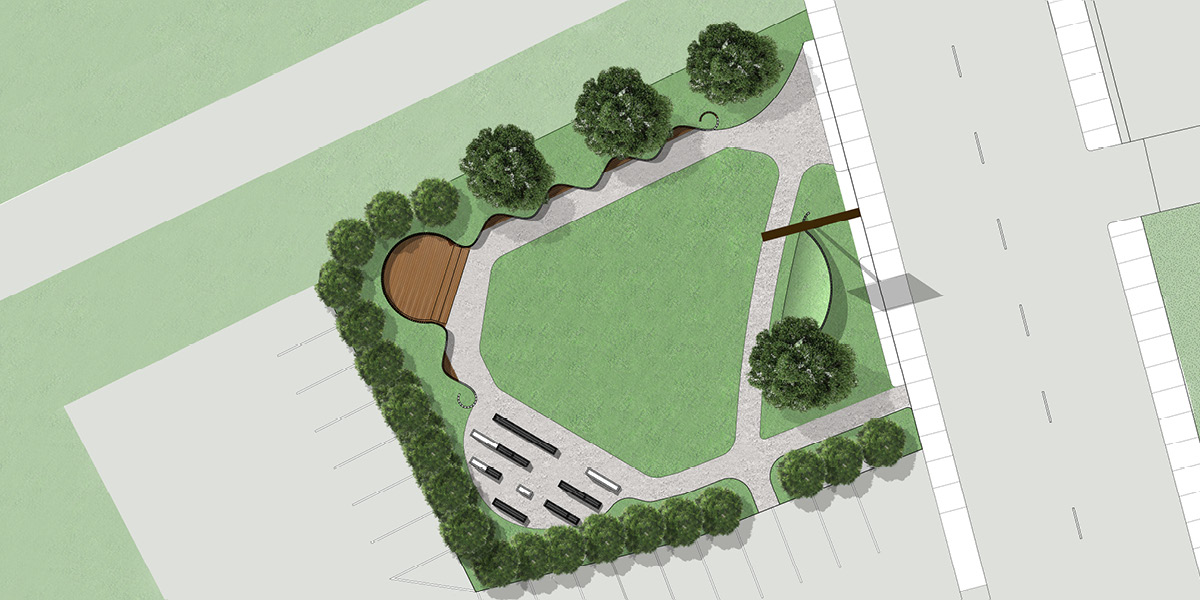
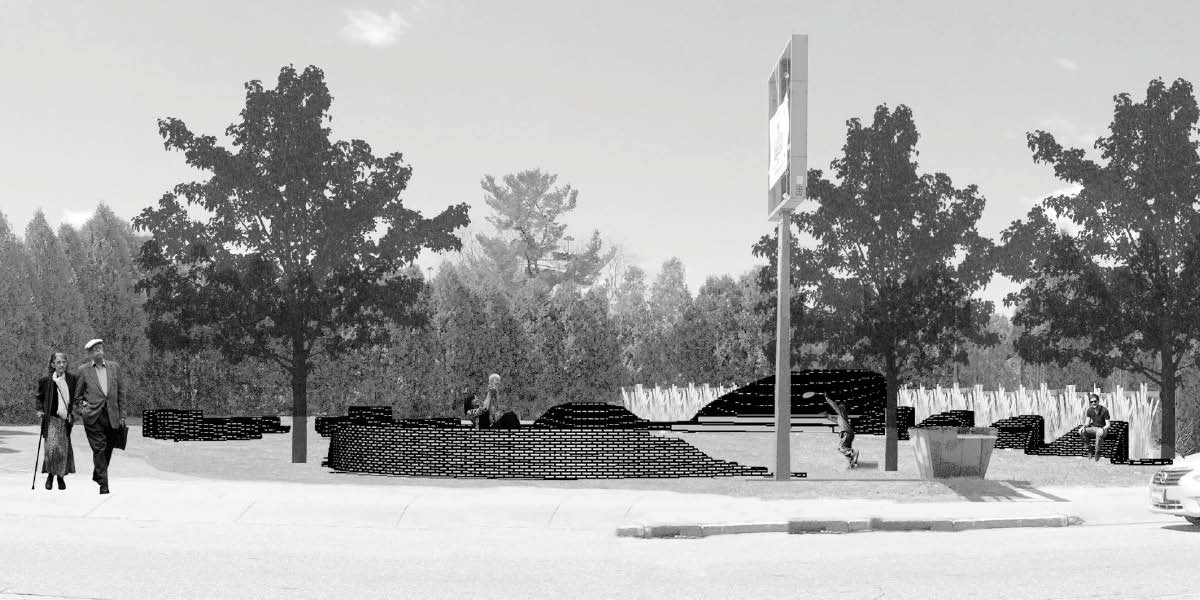
Connecticut College students' design for a public park on private land in three phases; View from Williams St
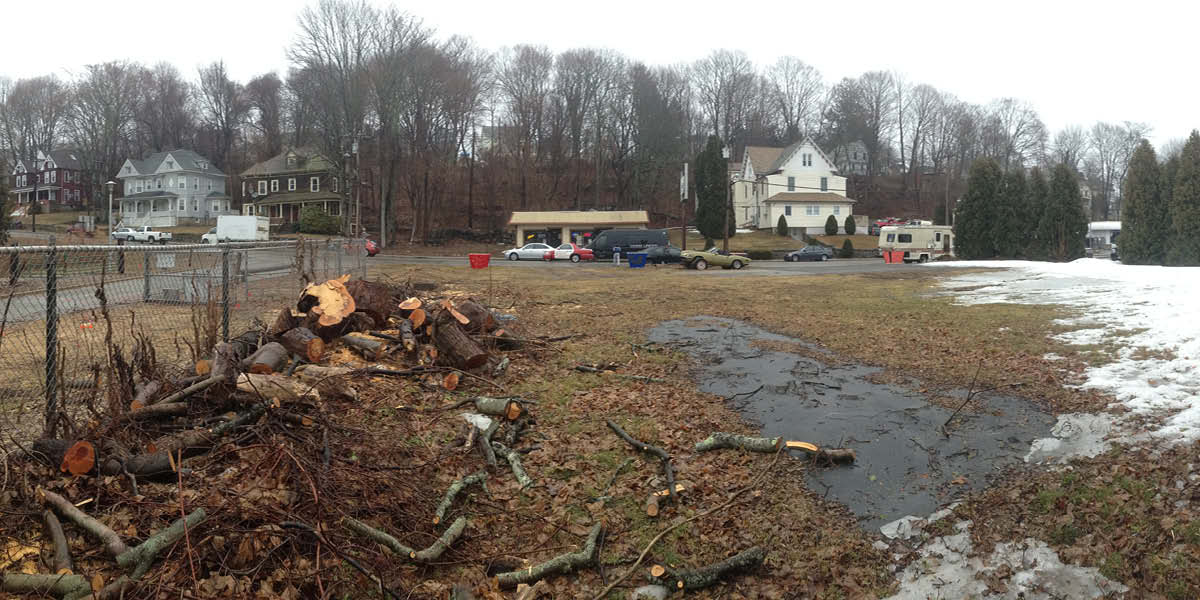
Existing Conditions: a remediated gas station site
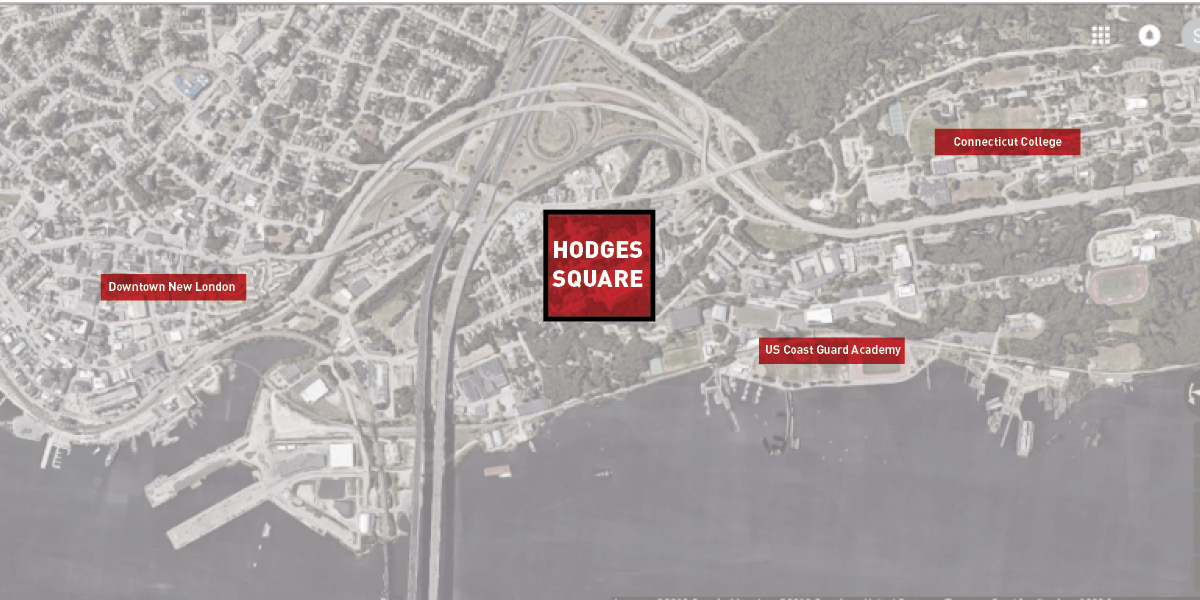
Location of Hodges Square. The park will serve as a new node connecting the colleges with downtown.
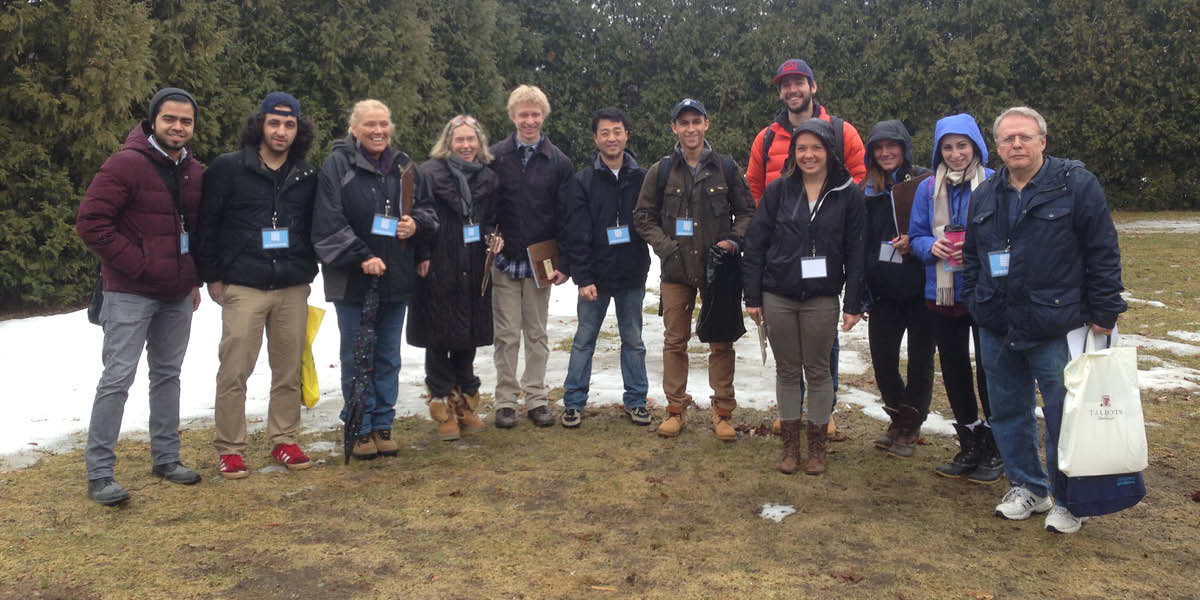
Connnecticut College students and Hodges Square Village Association members prepare to canvas the neighborhood with the community survey;
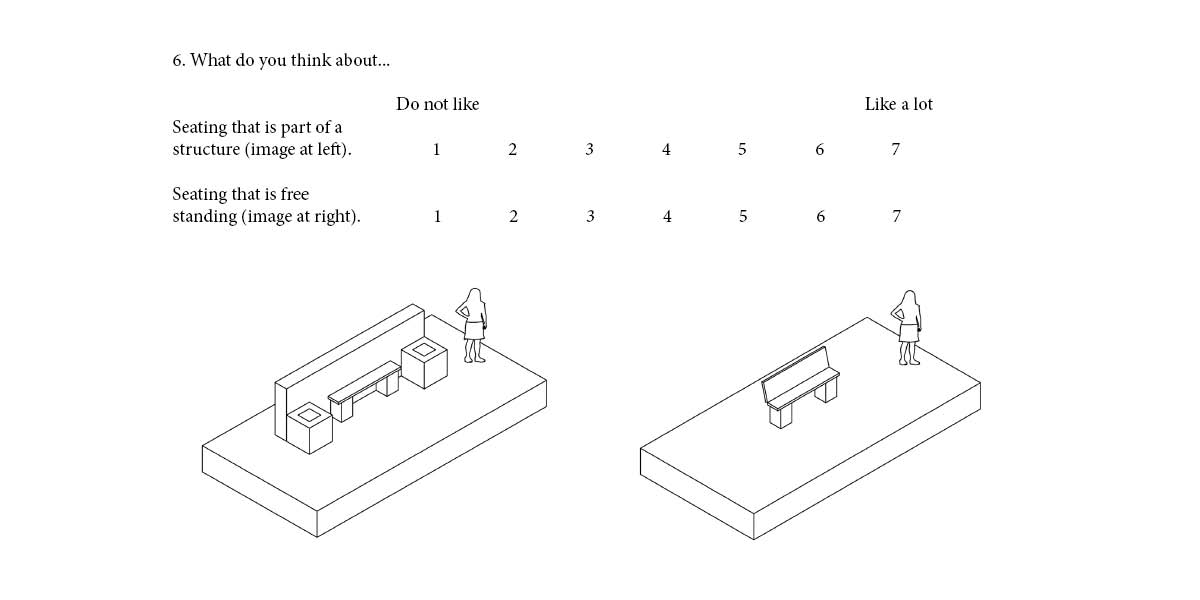
Example from community survey
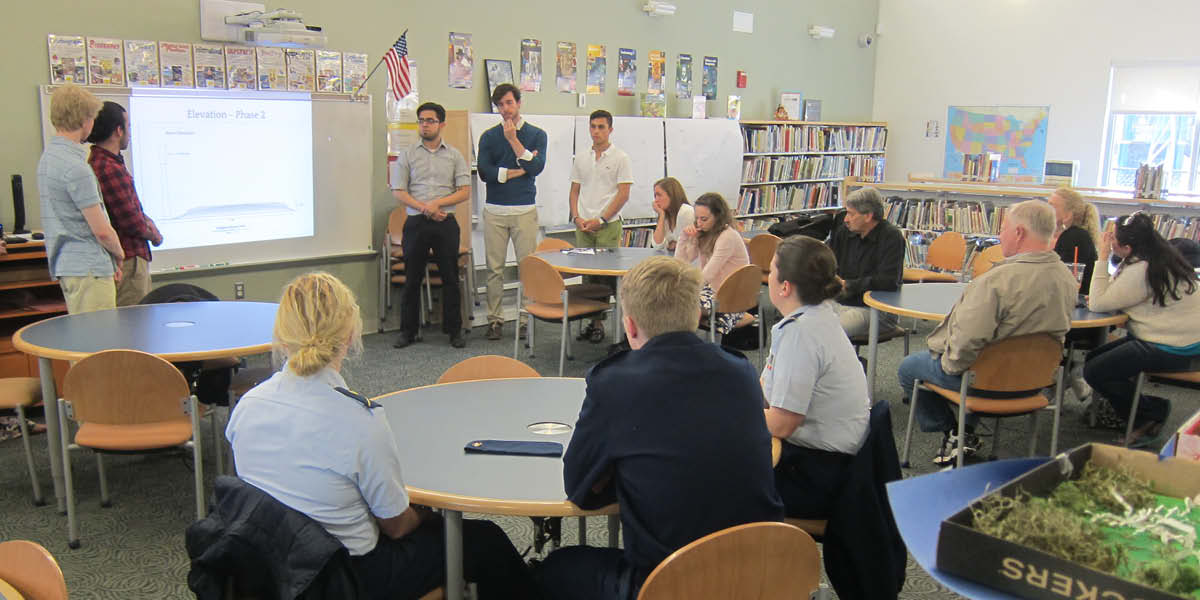
Community meeting
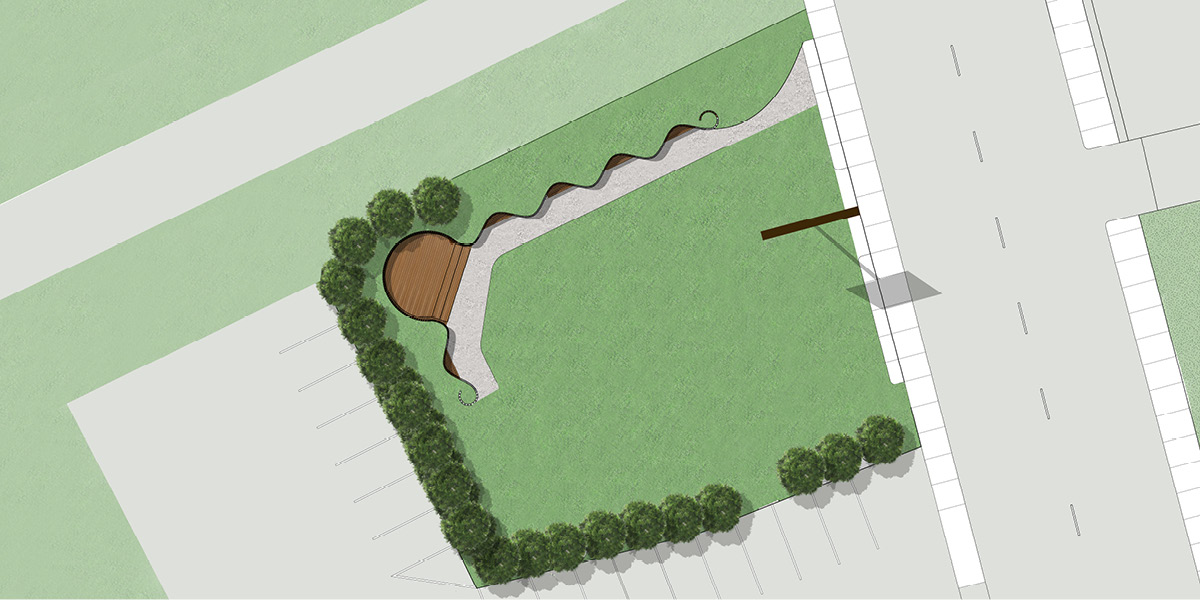
Phase 1: Plan: Seating, Planters, Stage
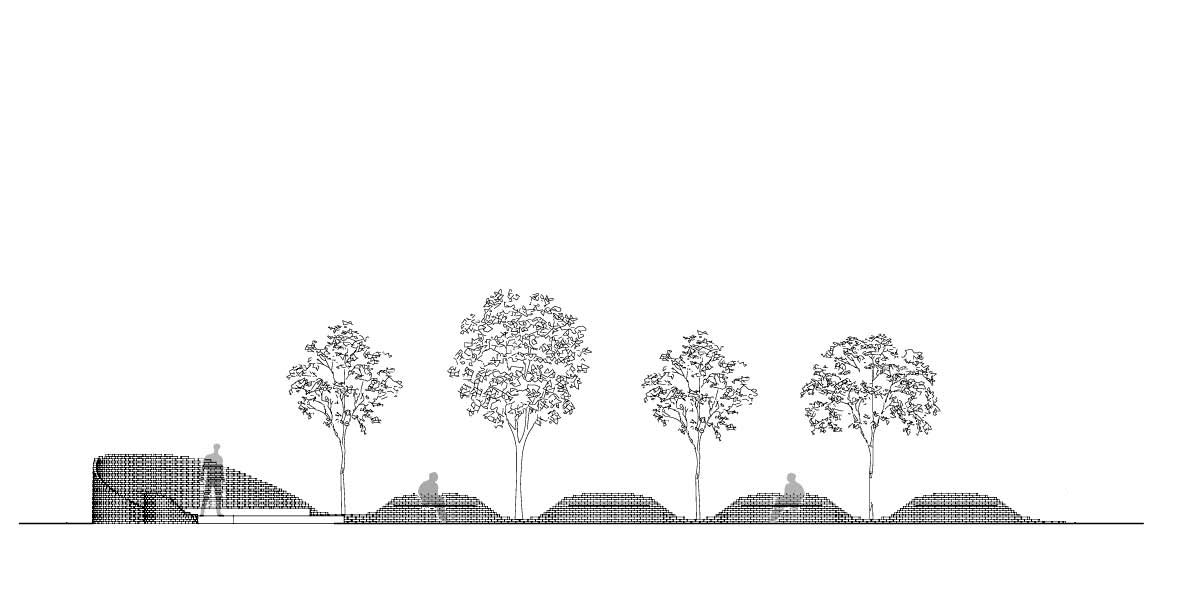
Phase 1: Elevation: Seating, Planters, Stage
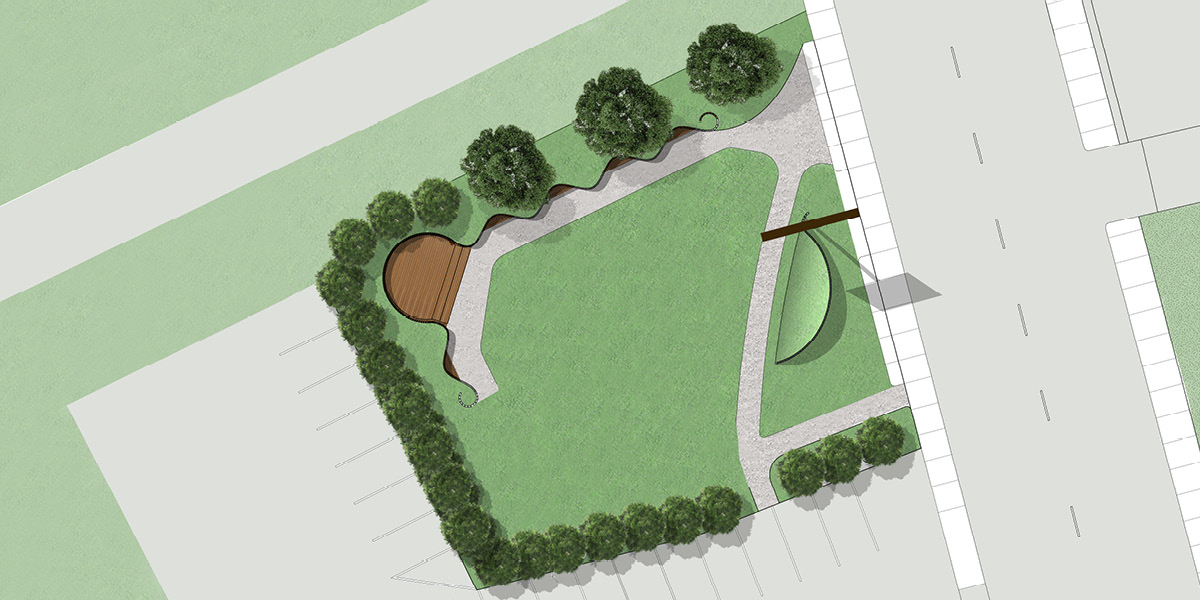
Phase 2: Plan: Sloped Entry Berm
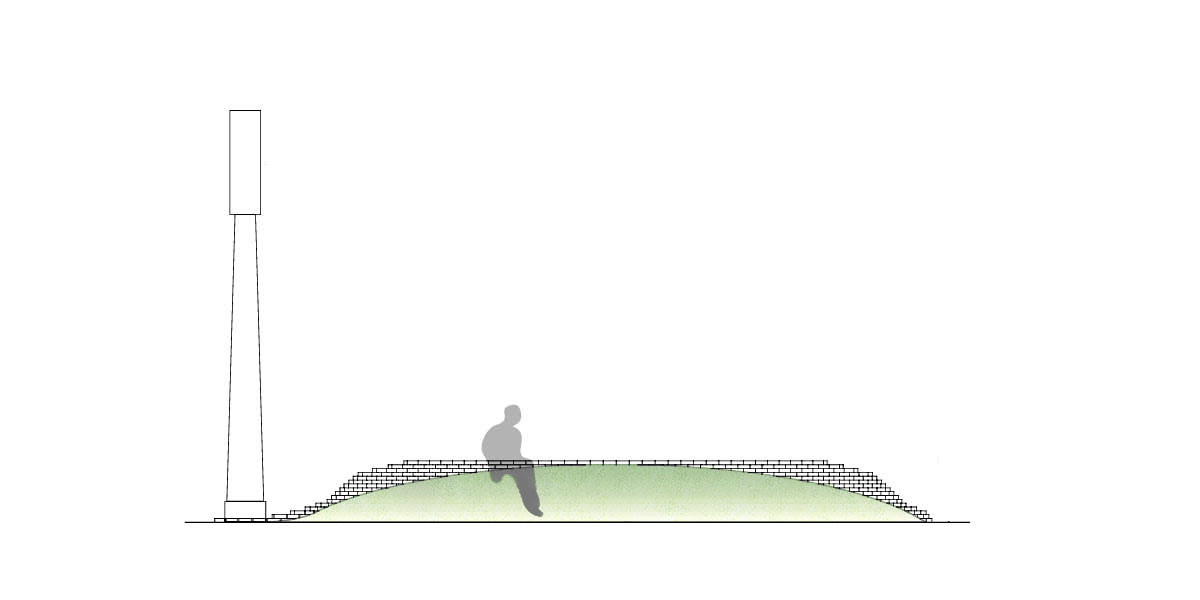
Phase 2: Elevation: Sloped Entry Berm

Phase 3: Plan: Seating/Planters

Cleaning and preparing the site
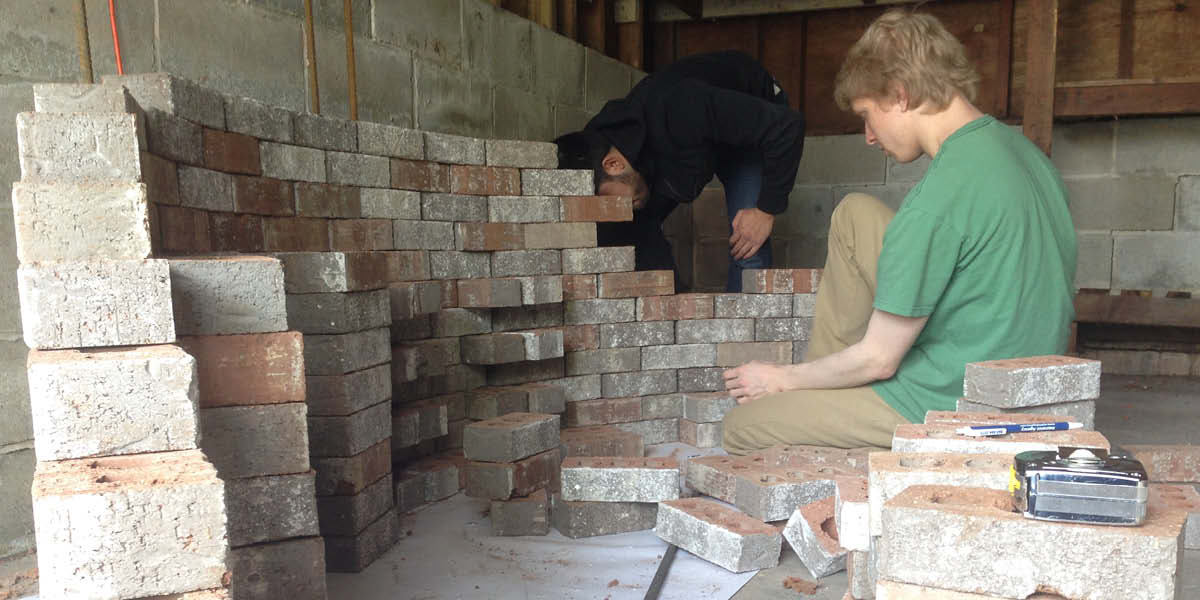
Preparing a mock up of the curved brick structure
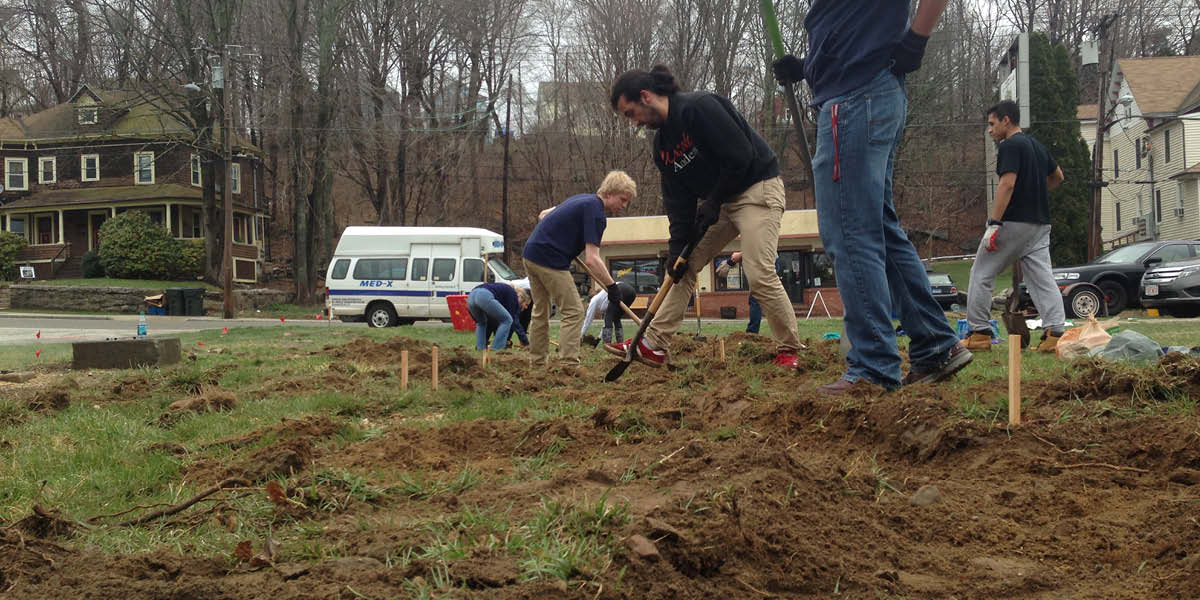
Surveying and preparing the site
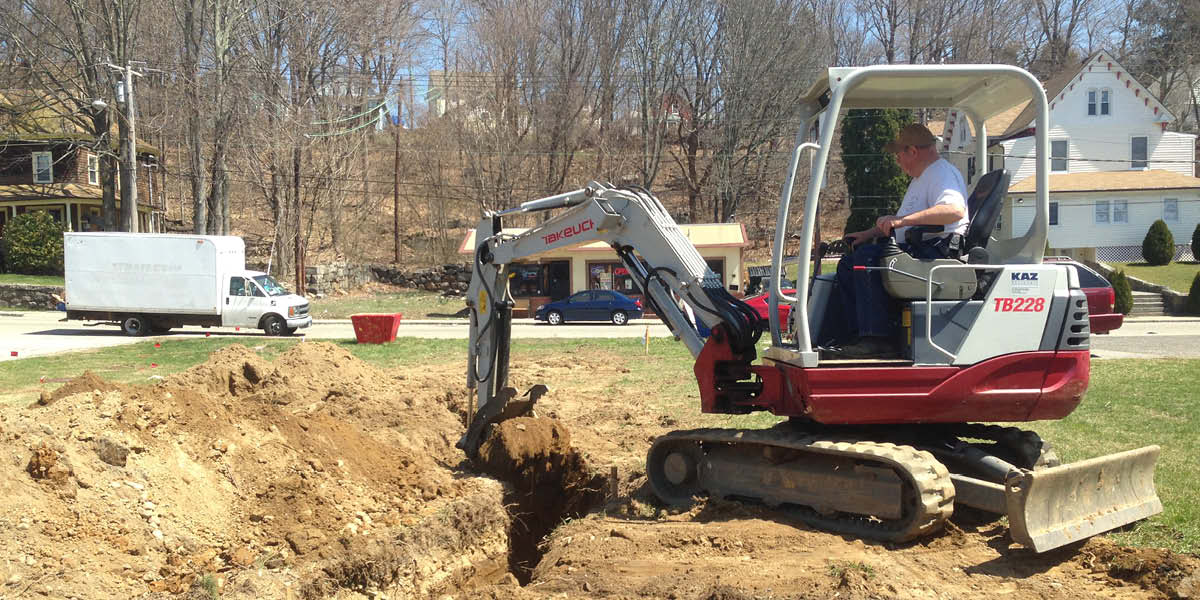
Excavating the foundations
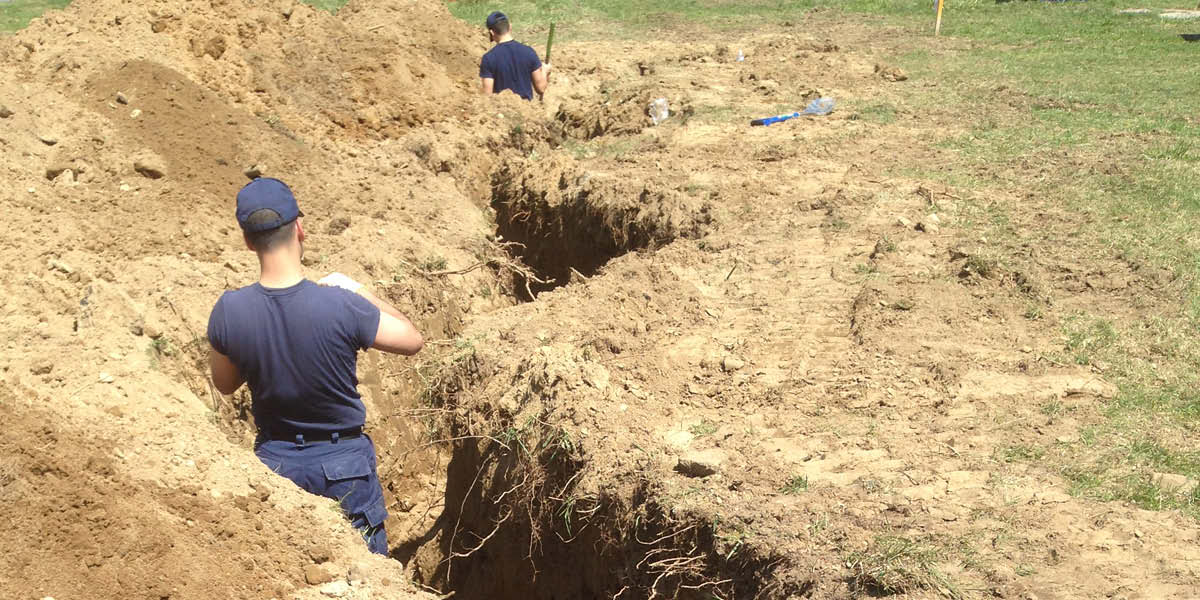
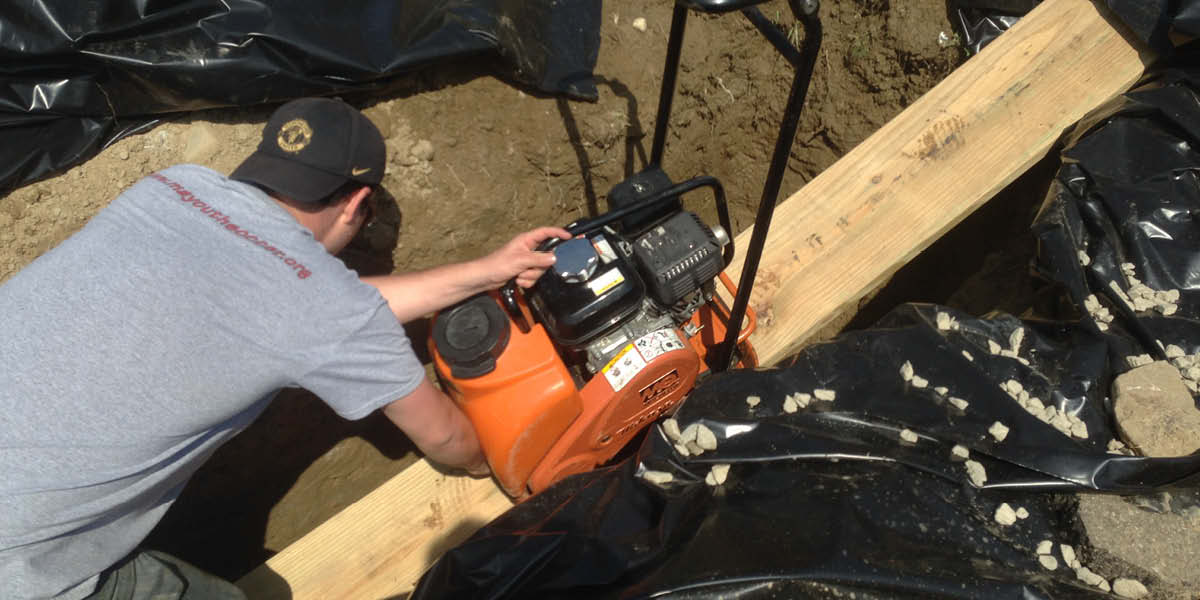
An impromptu ramp to get the compactor into the 4’ trench.
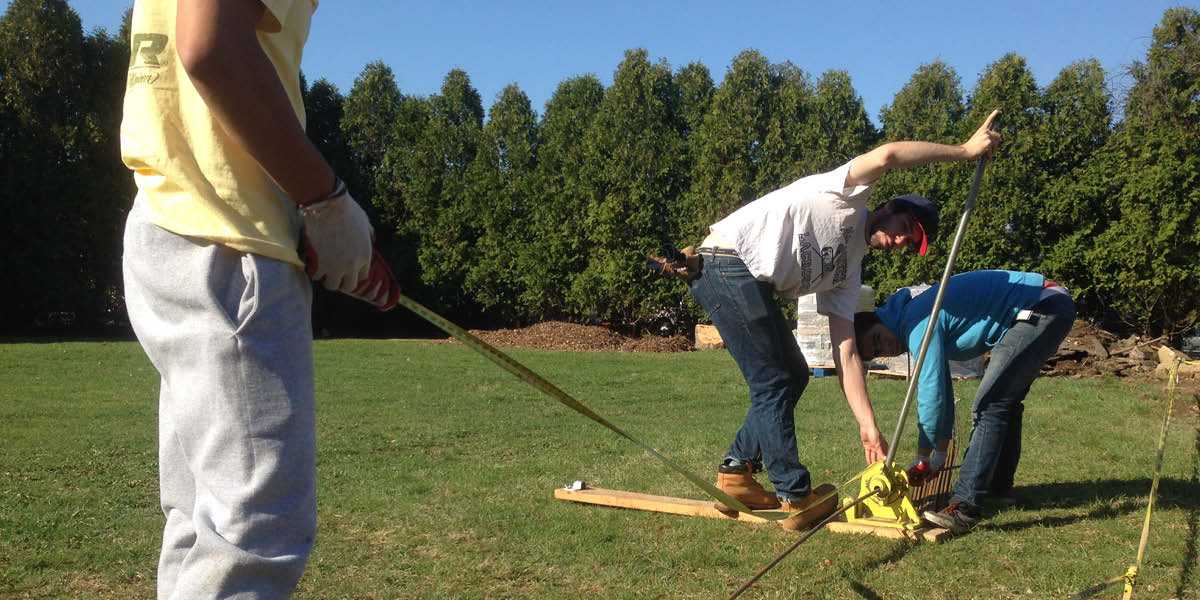
Cutting and bending rebar
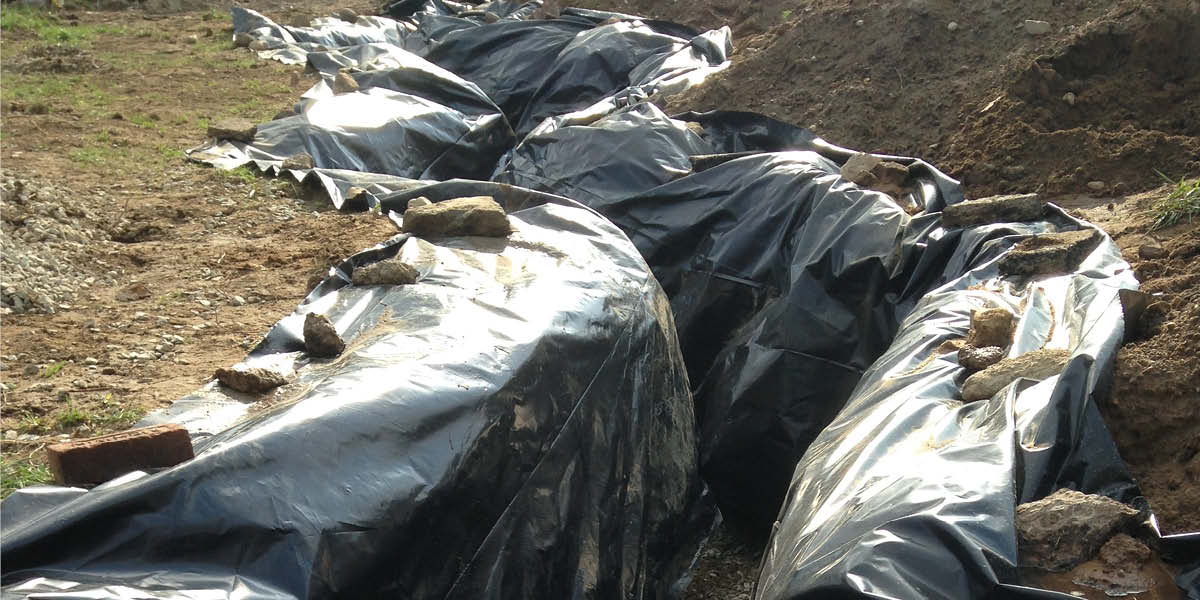
Concrete was poured directly into the trench due to time and budget constraints
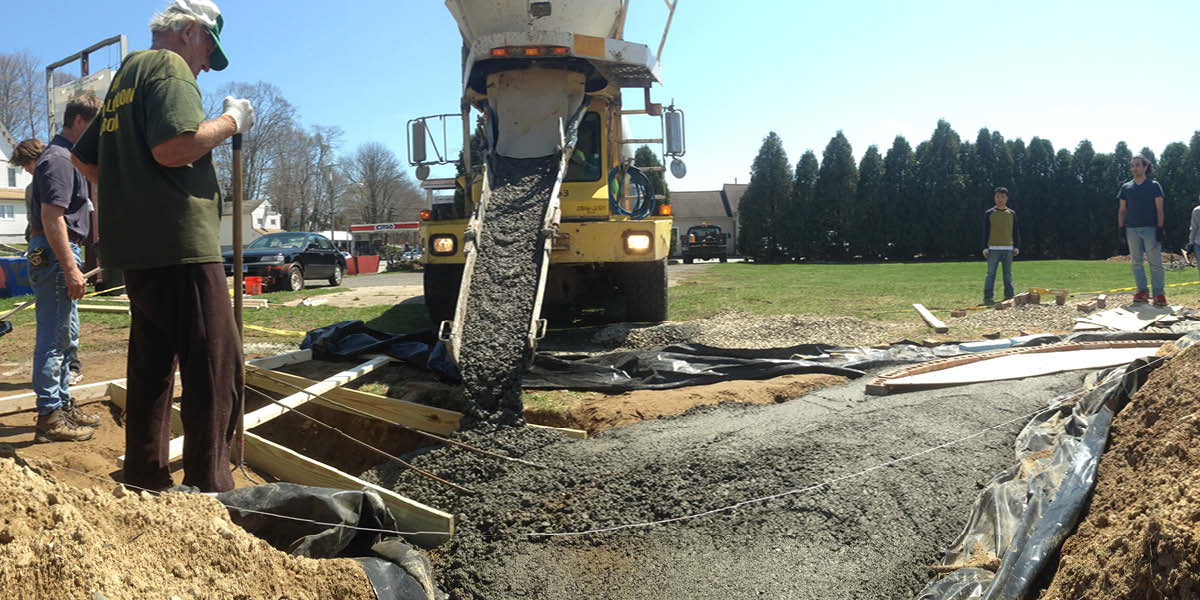
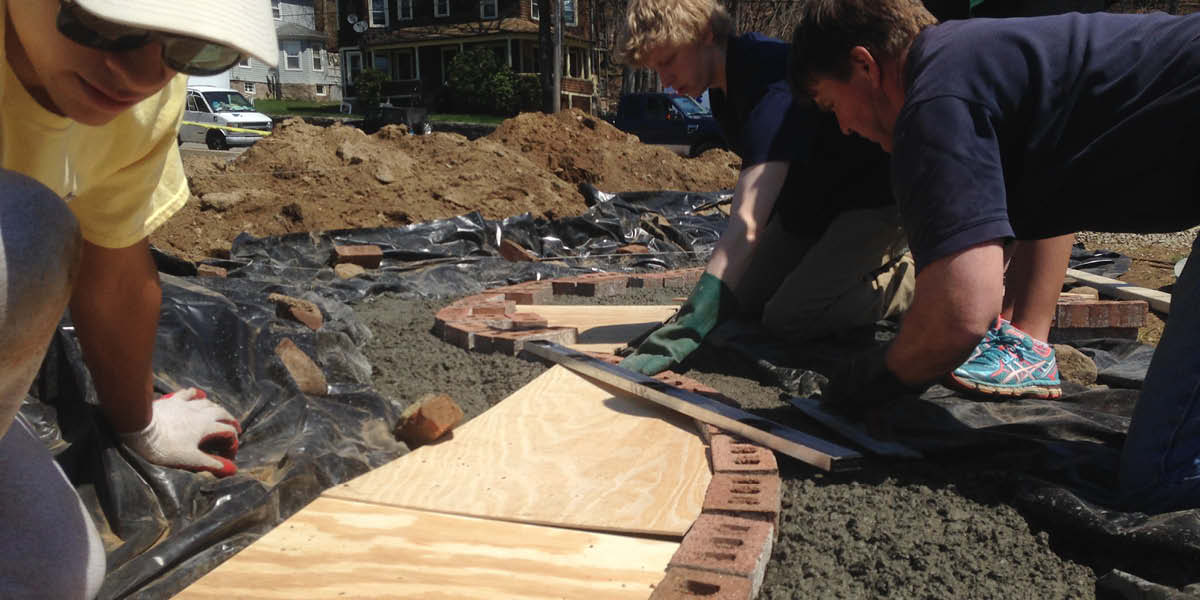
Brad Atwater oversees the simultaneous pouring, leveling and smoothing of concrete, while laying the first level brick course
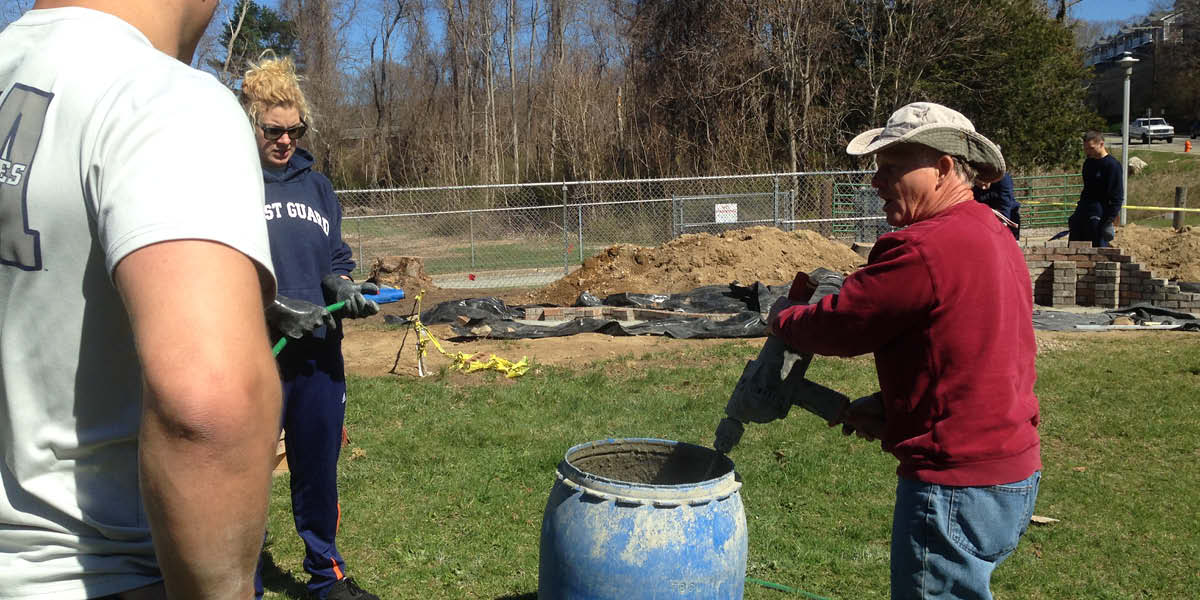
Mason Tom Fouse adds mortar and good cheer to the mix
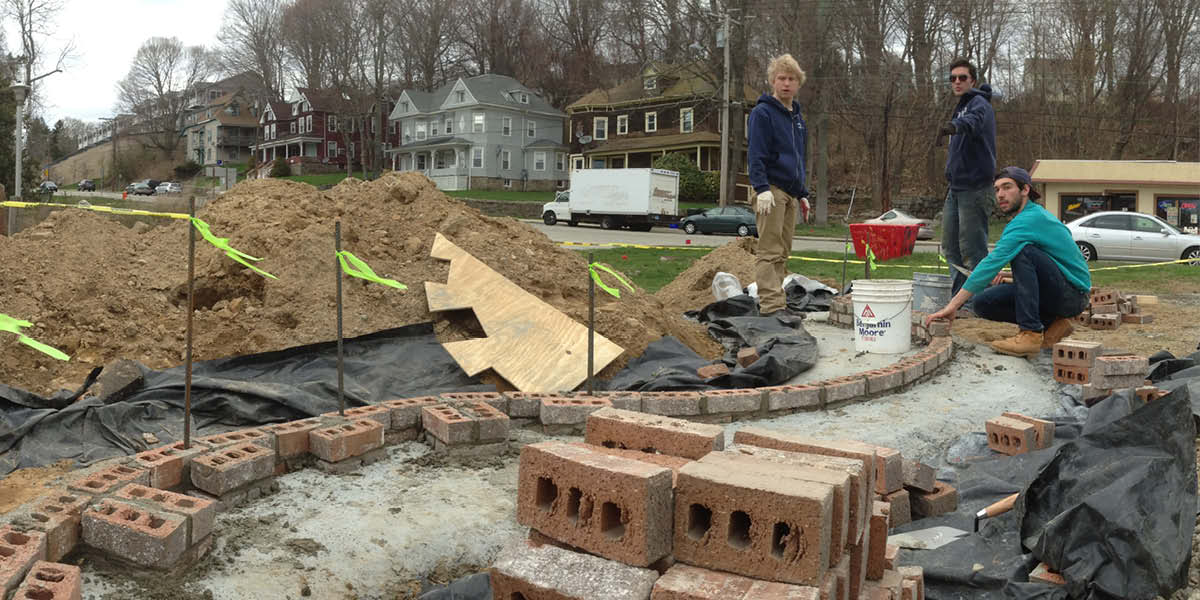
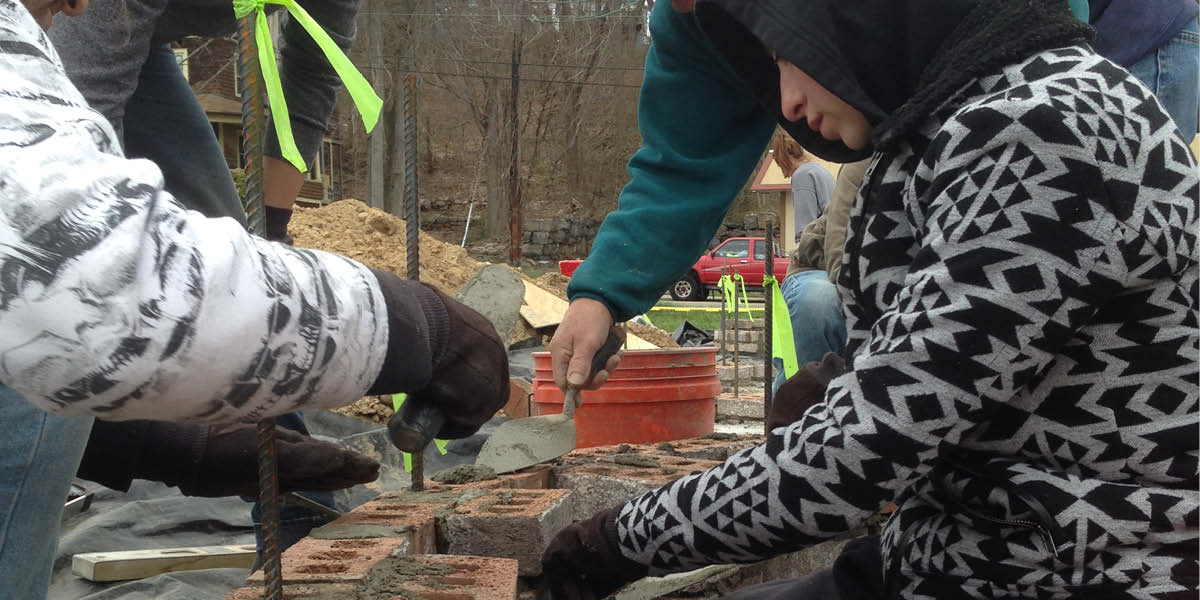
Braving cold weather to lay brick
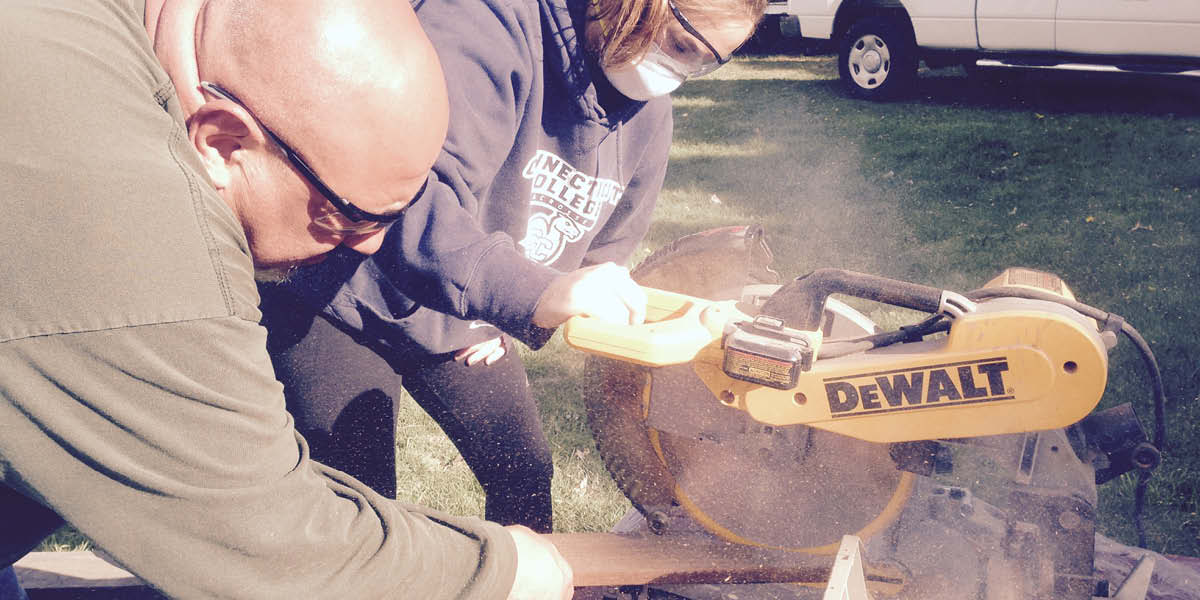
Rick Mercardo of the Department of Public Utilities helps a student cut the dense Ipe wood.
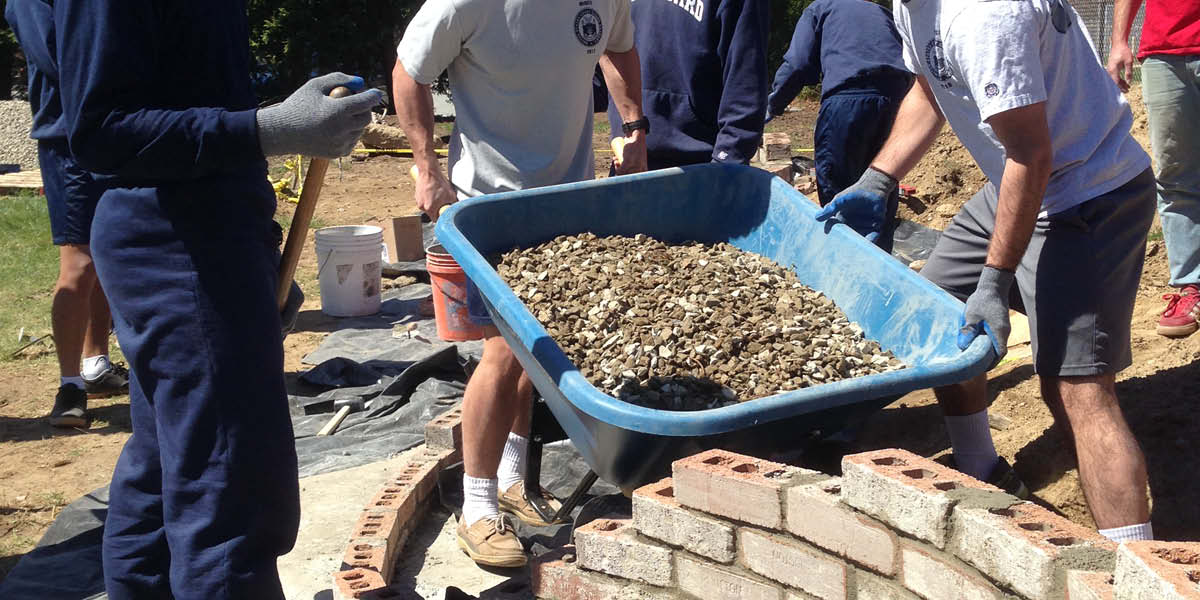
US Coast Guard Academy cadets helped with construction over weekends
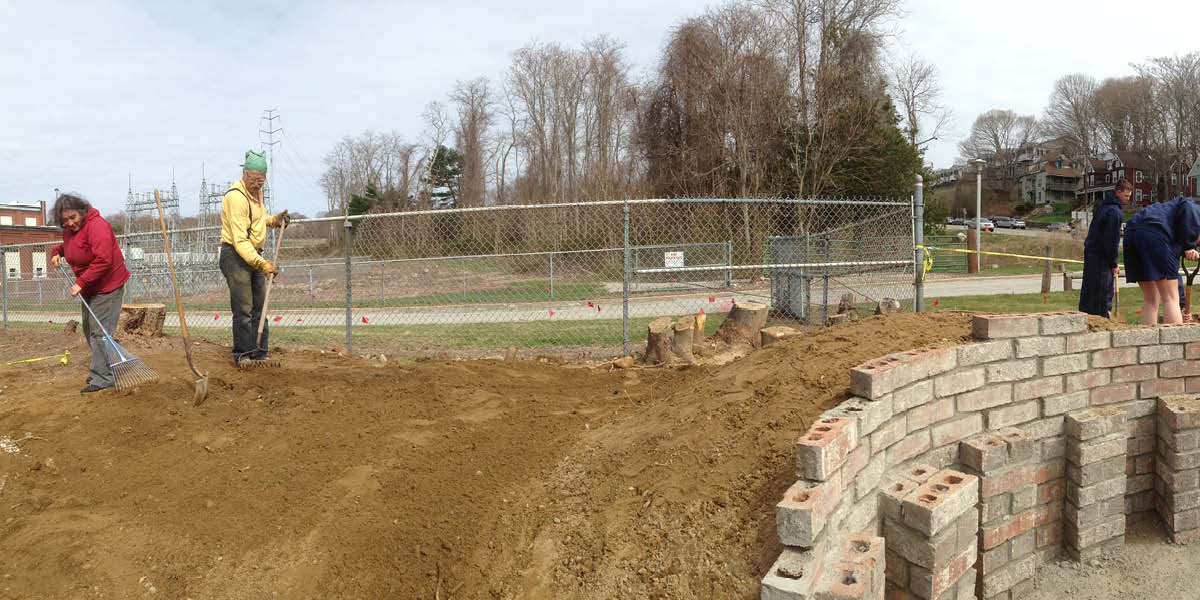
New London residents Ronna and Bob Stuller form the berms that reinforce the brick structure and provide visual interest
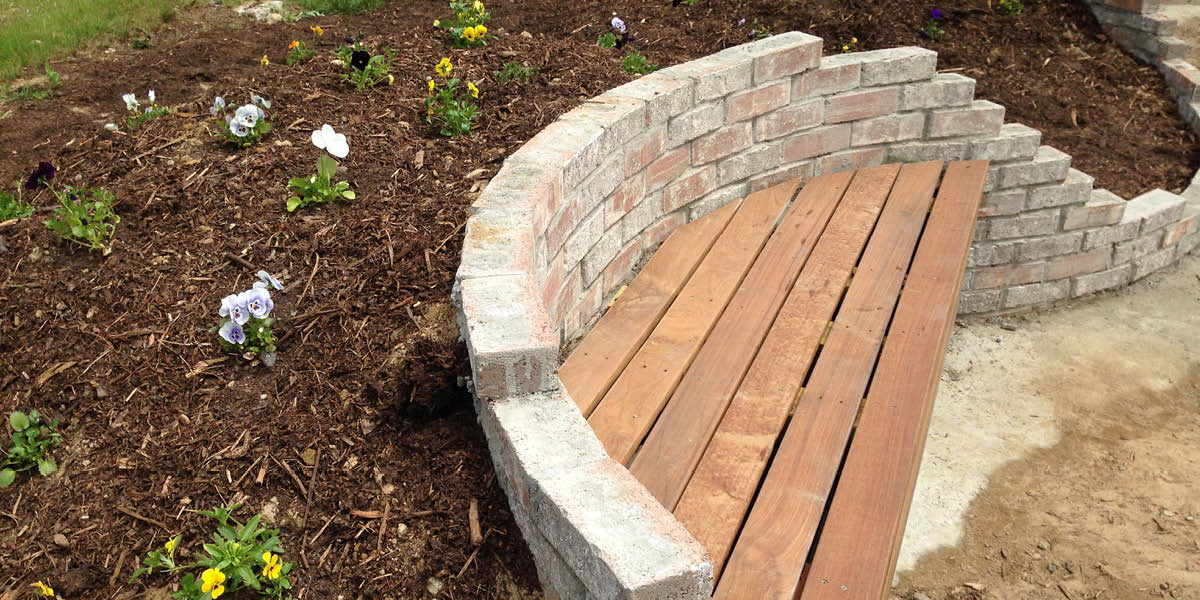
Completed seating of Phase 1A
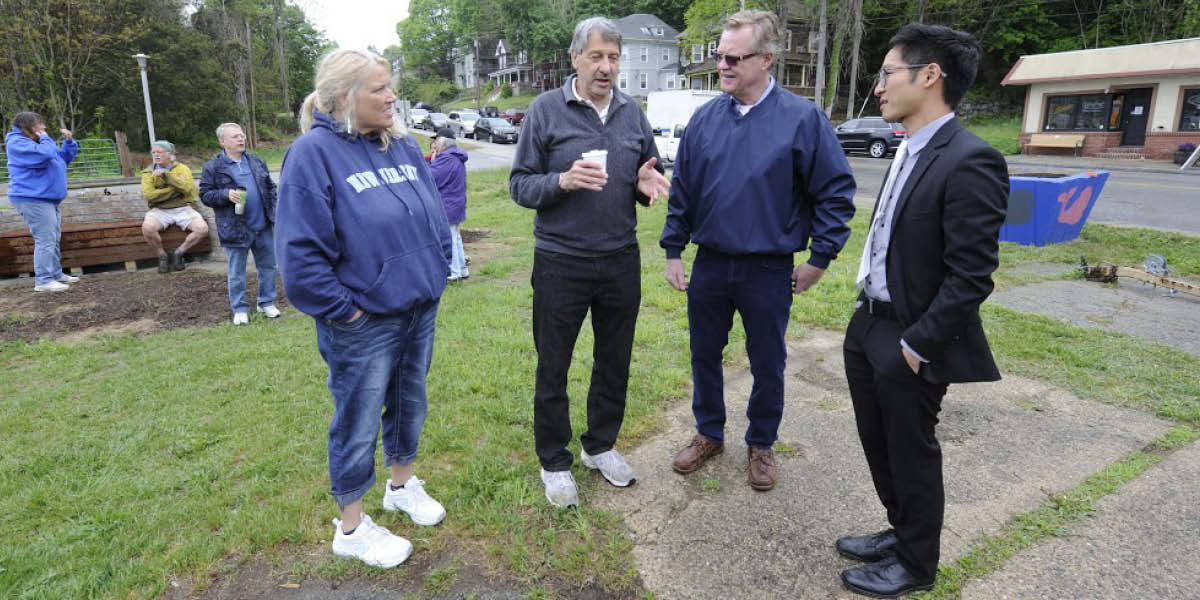
HSVA co-chairs Cathi Strother and Forrest Sklar, State Senator Paul Formica, and S. Fan chat during the opening
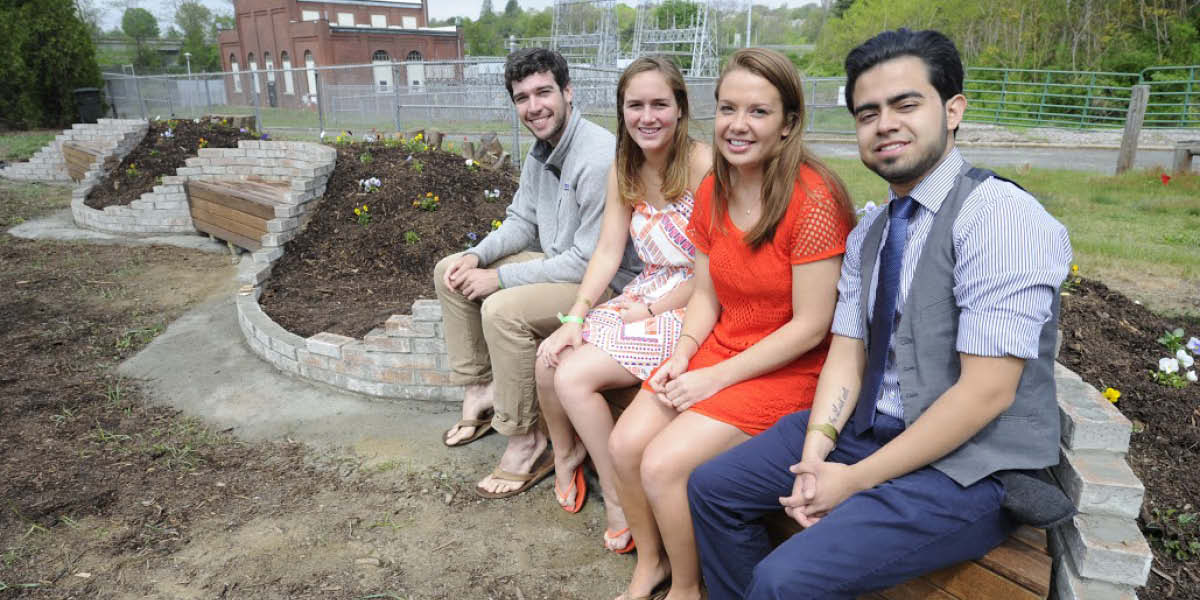
Conn College students celebrating their hard work
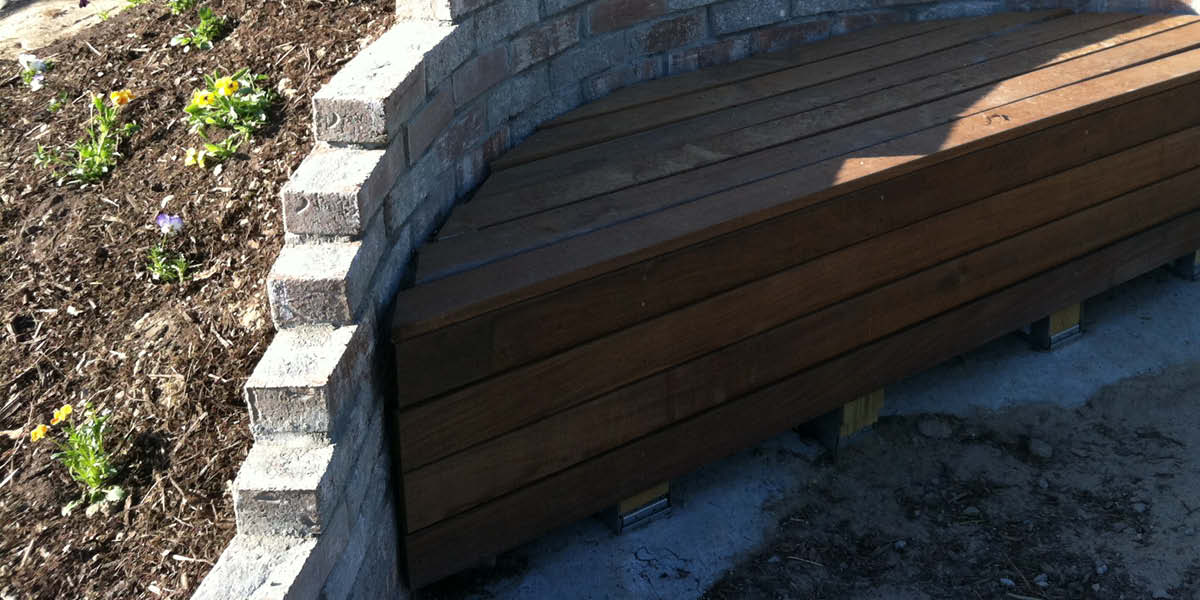
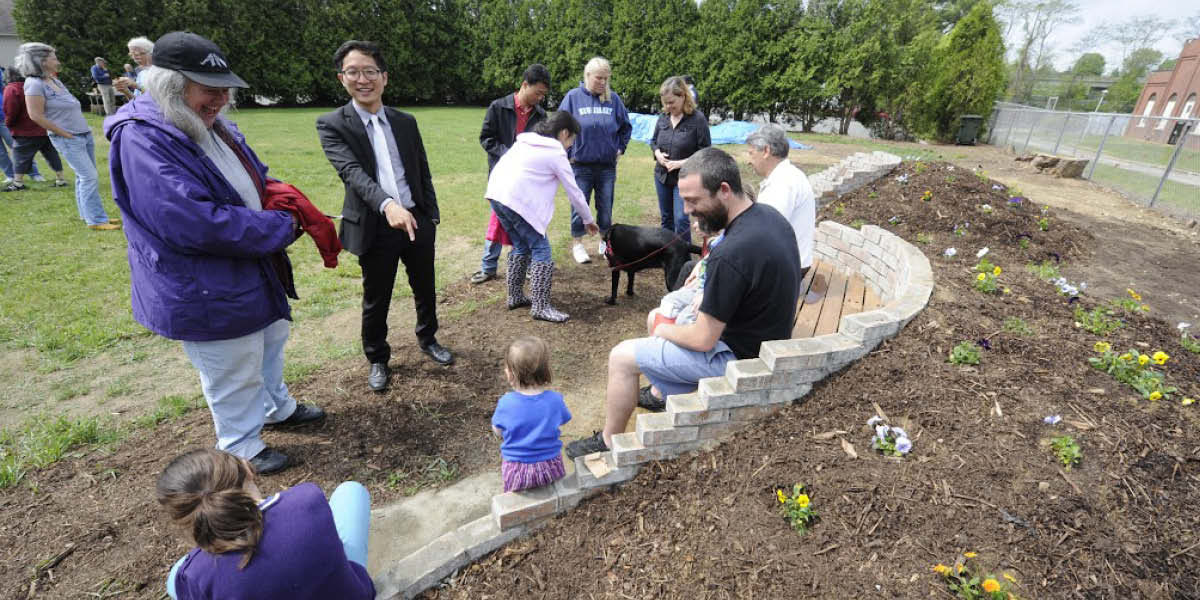
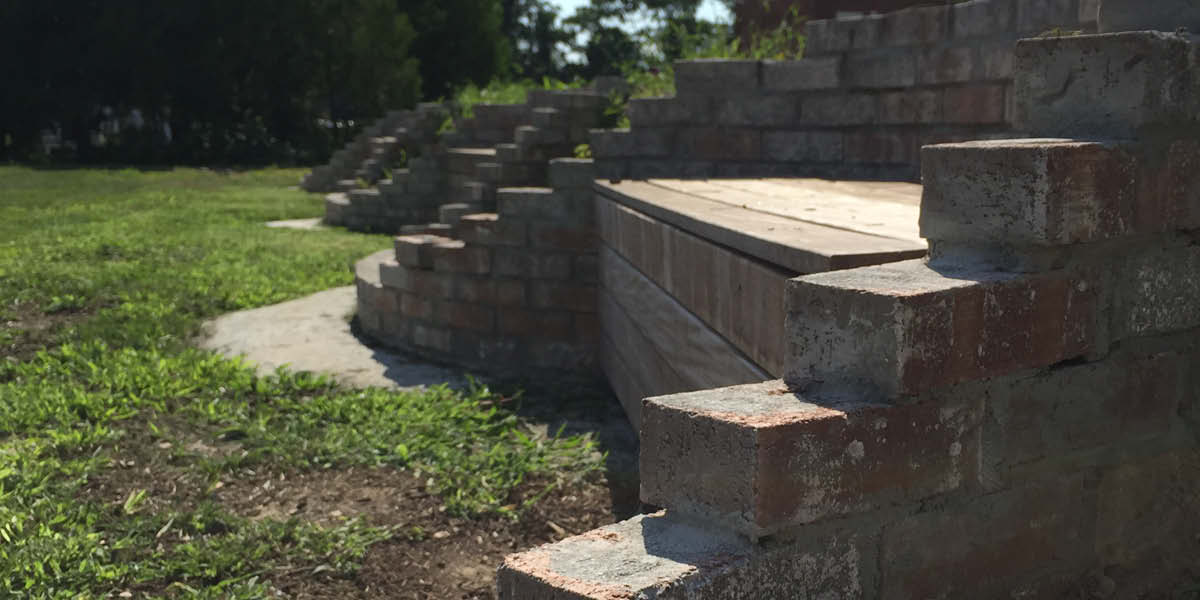
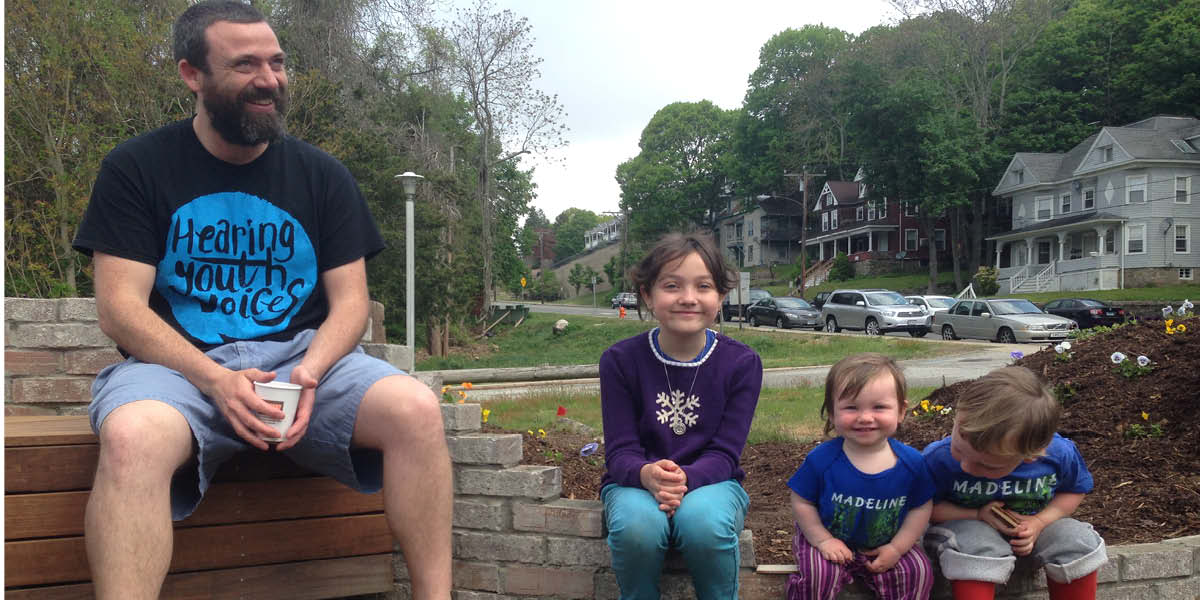
Seating for all ages